5th January IBPS Clerk Quant Quiz
Quantitative Aptitude is the most dreaded subject among the aspirants. If one has to sail through any prestigious exam, quant is the ineluctable hitch. Due to the rising difficulty bar and complexity of questions, it has become necessary for students to be ahead of the examination pattern. Practicing from a different variety of questions can help you sail through any competitive exam. As IBPS Clerk Mains exam is approaching shortly, to help you tackle this section, Adda247 is providing you daily quizzes of Quantitative Ability with the number of updated questions on a daily basis to keep you updated with the difficulty level and types of questions that may be asked in the exam. So practice with the different types of questions to be in the race.
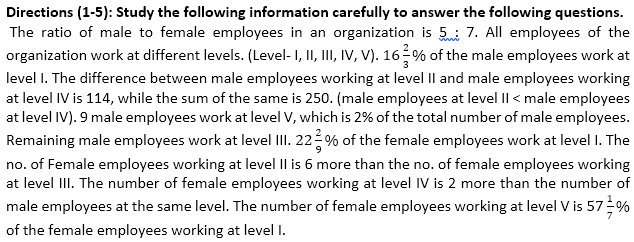
Q1. Find the total number of employees working on level II.
(a) 176
(b) 184
(c) 188
(d) 192
(e) 172

Q3. What is the respective ratio of male employees working at level I to the female employees working at level V?
(a) 15 : 16
(b) 14 : 15
(c) 15 : 17
(d) 17 : 19
(e) 18 : 19
Q4. What is the total number of employees working at level I, level II and level III?
(a) 325
(b) 425
(c) 475
(d) 525
(e) None of these
Q5. The number of female employees of which level is equal to the number of male employees of level III?
(a) level I
(b) level II
(c) level III
(d) level IV
(e) level V
Directions (6-10): The following questions are accompanied by two statements A and B. You have to determine which statements(s) is/are sufficient/necessary to answer the questions.
Q6. A person finds that his son’s age after ‘x’ years will be 3/8th of his age at that time, his wife finds that ratio of age of his only son after x years to her age at that time will be 3:7. Find the average of their (all three) present age?
I. That person is 5 years older than that of his wife.
II. Ratio of present age of father to that of his son is 6:1.
(a) Statement I alone is sufficient to answer the question, but statement II alone is not sufficient to answer the questions
(b) Statement II alone is sufficient to answer the question, but statement I alone is not sufficient to answer the question.
(c) Both the statements taken together are necessary to answer the questions, but neither of the statements alone is sufficient to answer the question.
(d) Either statement I or statement II by itself is sufficient to answer the question.
(e) Statements I and II taken together are not sufficient to answer the question.
Q7. Ratio of distance covered by a boat in upstream to that of in downstream is 2:3 and time taken by boat to cover that upstream distance is equal to the time taken by the boat to cover those downward distance. Find the speed of boat in still water?
I. Difference of speed of boat in still water to that of speed of boat in upstream is 5 km/hr
II. Boat will cover 50 km of distance in upstream in 2.5 hours.
(a) Statement I alone is sufficient to answer the question, but statement II alone is not sufficient to answer the questions.
(b) Statements I and II taken together are not sufficient to answer the question.
(c) Either statement I or statement II by itself is sufficient to answer the question.
(d) Both the statements taken together are necessary to answer the questions, but neither of the statements alone is sufficient to answer the question.
(e) Statement II alone is sufficient to answer the question, but statement I alone is not sufficient to answer the question.
Q8. We have to choose from 6 women and 9 men for the post of HR and Operation Management in-charge in which minimum 2 woman has to be selected. What is the probability that both the persons selected are un-married?
I. only 2 women are married.
II. The number of men who were unmarried was twice of number of unmarried women.
(a) Both the statements taken together are necessary to answer the questions, but neither of the statements alone is sufficient to answer the question.
(b) Statement II alone is sufficient to answer the question, but statement I alone is not sufficient to answer the question.
(c) Either statement I or statement II by itself is sufficient to answer the question.
(d) Statement I alone is sufficient to answer the question, but statement II alone is not sufficient to answer the questions.
(e) Statements I and II taken together are not sufficient to answer the question.
Q9. Three persons A, B and C together can do a work in 8 days while A, B and D together can do that work in 15/2 days. Find in how many days B alone will do that work?
I. A alone takes 4 days less than that of C alone to do that work and time taken by A alone and D alone to do that work is equal.
II. Ratio of efficiency of A to that of B is 3:2 and ratio of efficiency of C to that of D is 5:6.
(a) Both the statements taken together are necessary to answer the questions, but neither of the statements alone is sufficient to answer the question.
(b) Statement II alone is sufficient to answer the question, but statement I alone is not sufficient to answer the question.
(c) Statements I and II taken together are not sufficient to answer the question.
(d) Statement I alone is sufficient to answer the question, but statement II alone is not sufficient to answer the questions.
(e) Either statement I or statement II by itself is sufficient to answer the question.
Q10. At the end of a year of starting a business, P and Q earns total profit of Rs. 60,000, calculate the profit-share of Q.
Q invested Rs. 40000 more than P.
II. Both of them invested for 12 months, but P also take 20% of total profit as a salary share.
(a) Statement I alone is sufficient to answer the question, but statement II alone is not sufficient to answer the questions.
(b) Statement II alone is sufficient to answer the question, but statement I alone is not sufficient to answer the question.
(c) Statements I and II taken together are not sufficient to answer the question.
(d) Both the statements taken together are necessary to answer the questions, but neither of the statements alone is sufficient to answer the question.
(e) Either statement I or statement II by itself is sufficient to answer the question.
Directions(11-15): What approximate value will come in place of question mark (?) in the following questions?
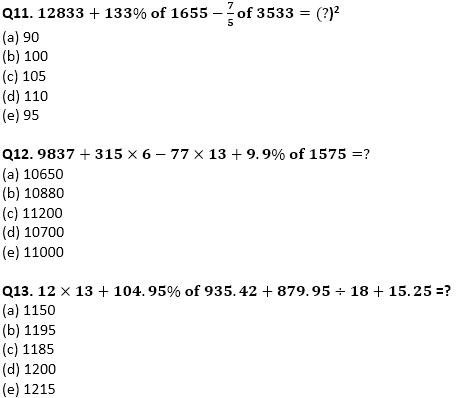

Solution:
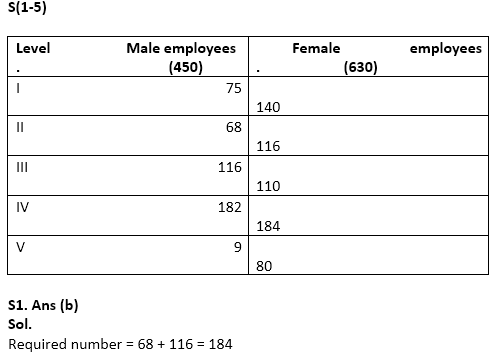
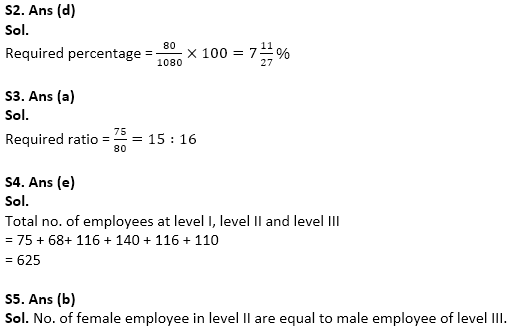
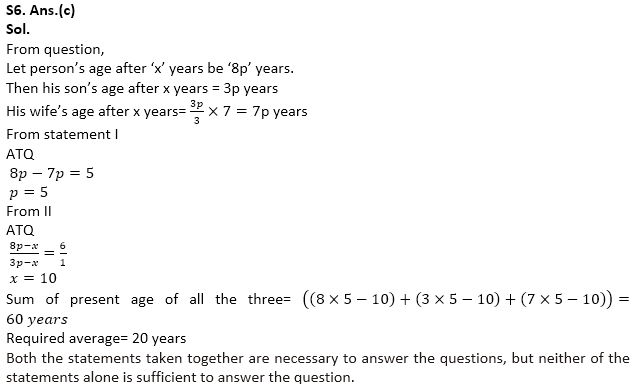
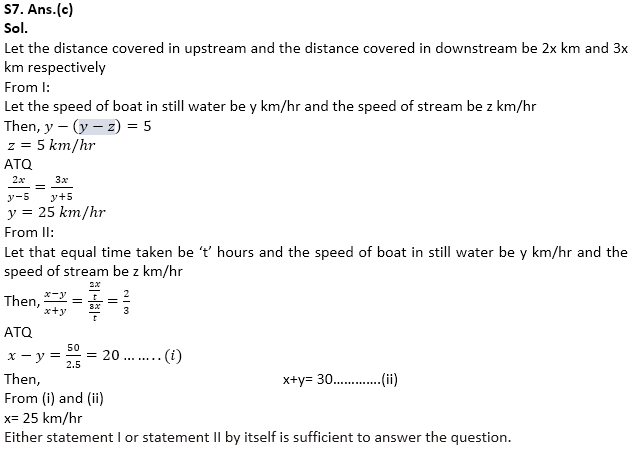

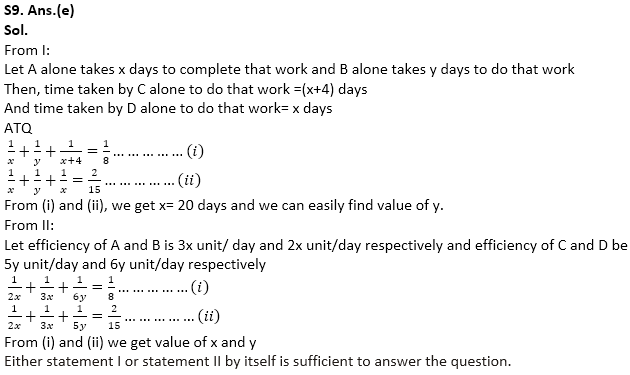
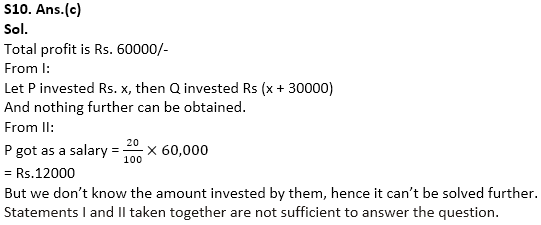
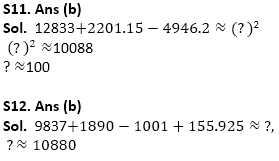
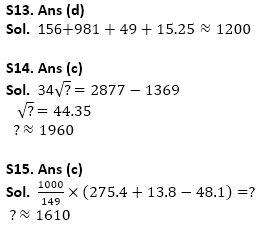
Quant Quiz for IBPS Clerk Mains 2019. Must Important Questions for IBPS Clerk Mains 2019.
Watch the Quant Marathan for IBPS Clerk Mains
You may also like to read:
- Quantitative Aptitude Quiz for Upcoming Exams
- Quantitative Aptitude Notes and Tricks for Upcoming Exams
Register here to get study materials and regular updates!!
All the Best BA’ians for IBPS Clerk Mains 2019!

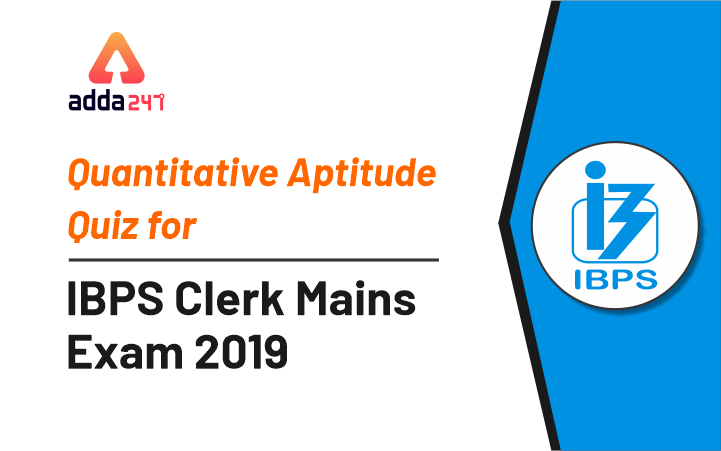



 IBPS RRB PO Mains Exam Analysis 2025, Al...
IBPS RRB PO Mains Exam Analysis 2025, Al...
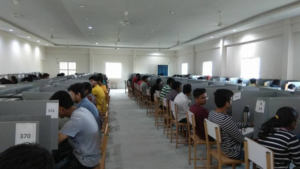 IBPS RRB PO Mains Exam Analysis 2025, 28...
IBPS RRB PO Mains Exam Analysis 2025, 28...








